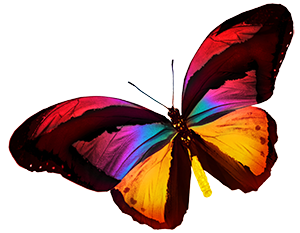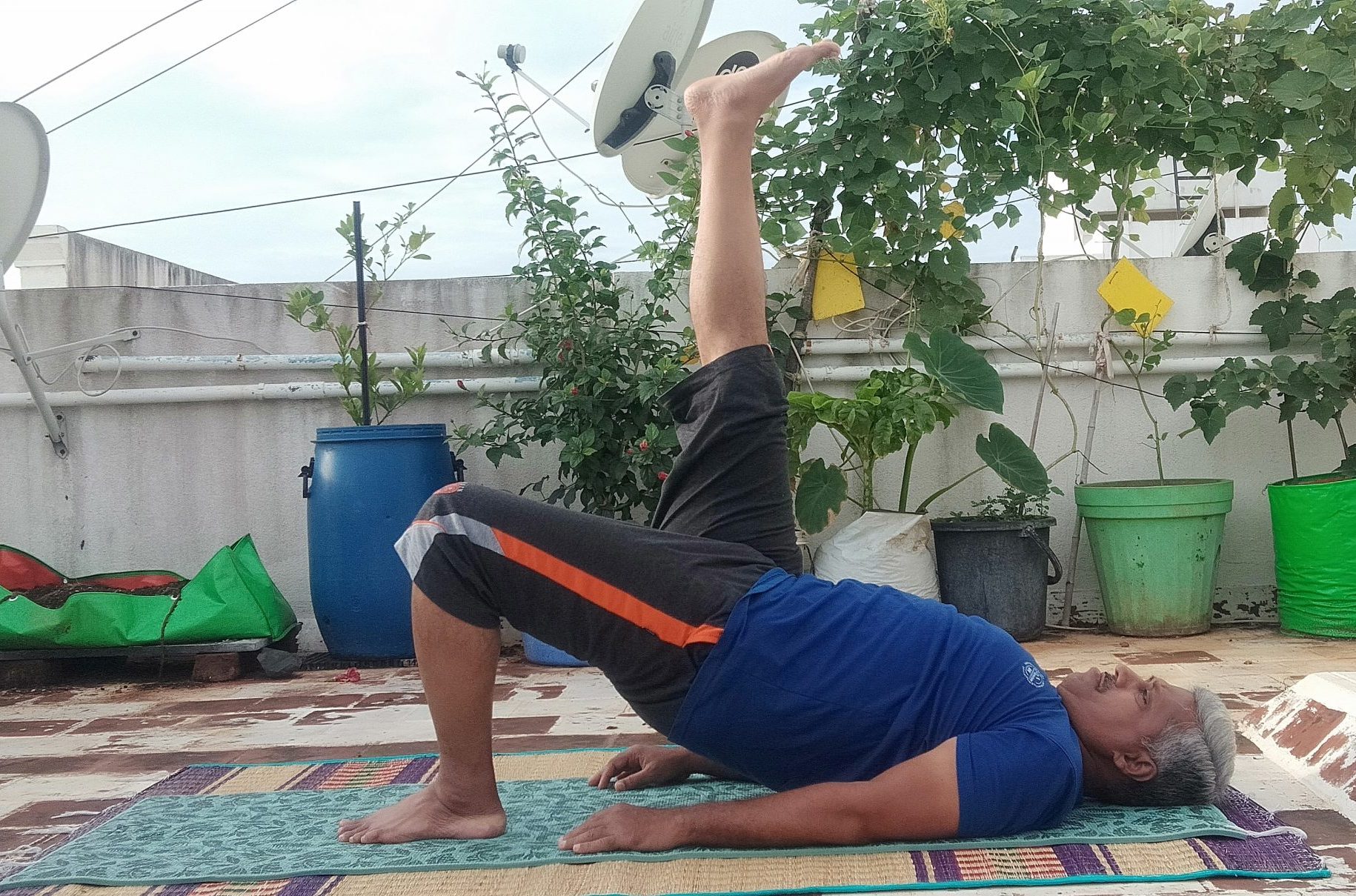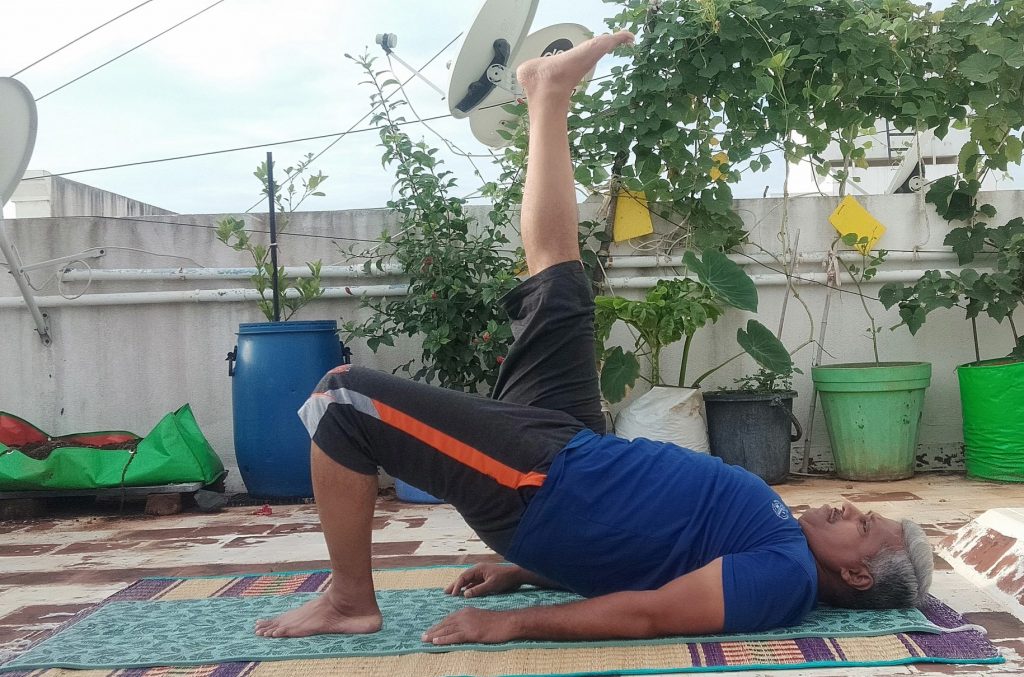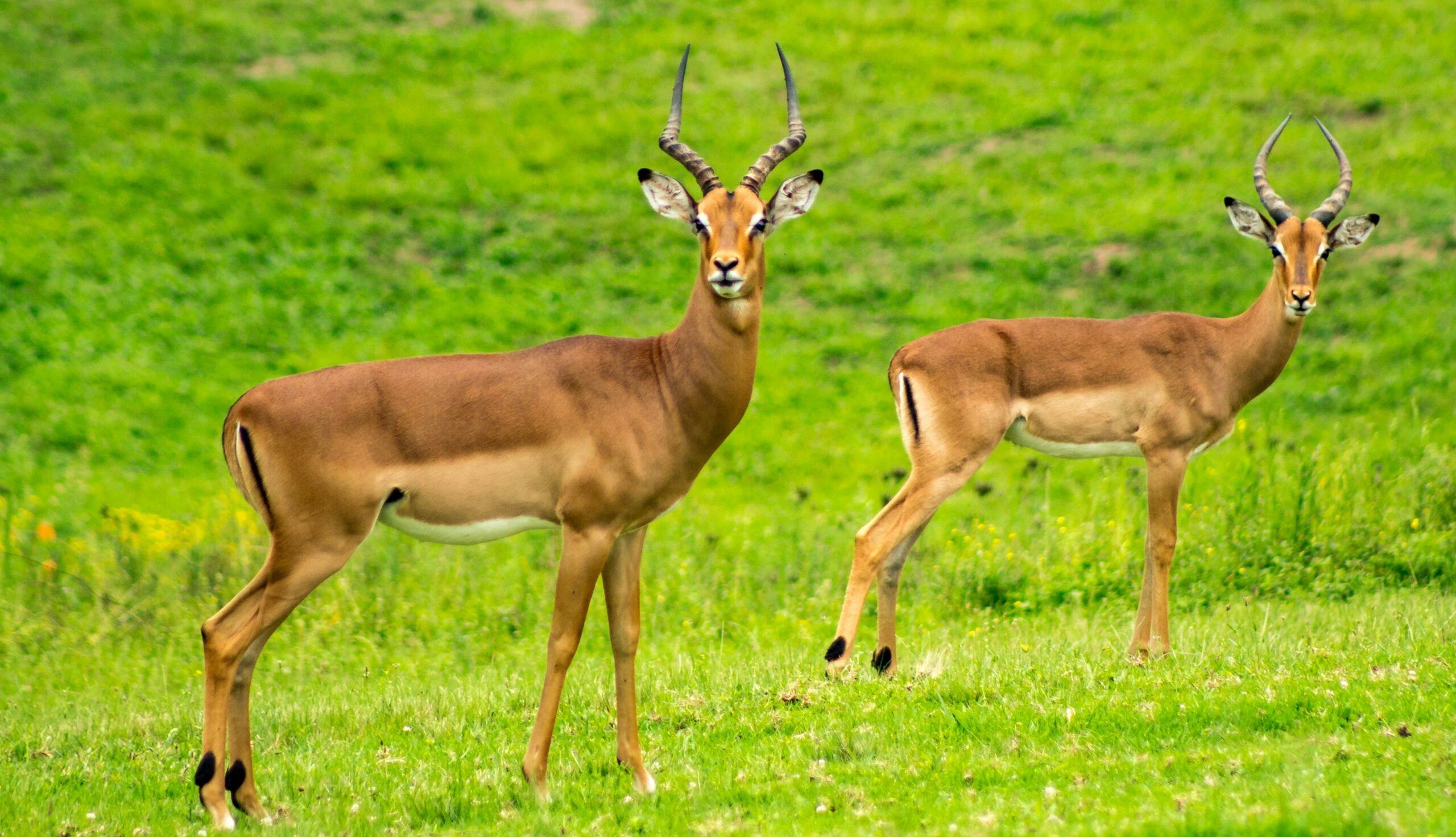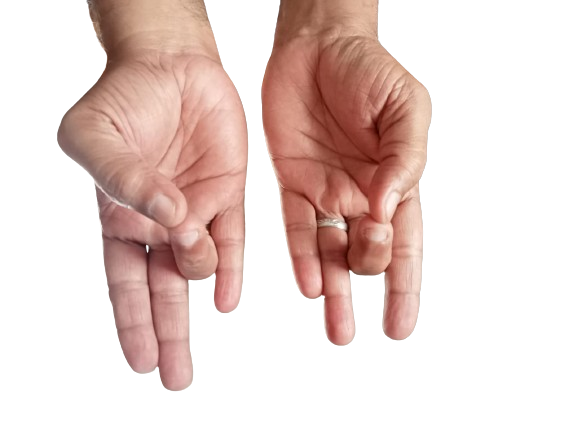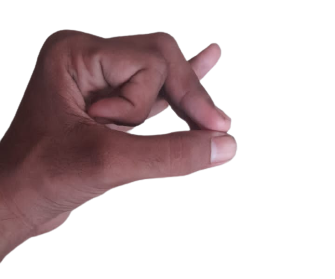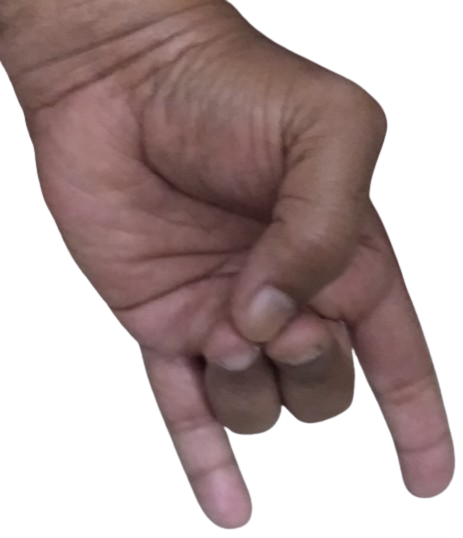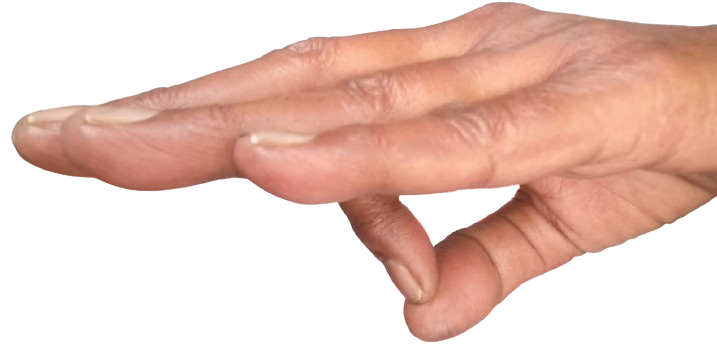In yesterday's post we covered the benefits of Bridge Pose and how to perform Bridge Pose. Today's post will be about One-Legged Bridge Pose. The pose is called Eka Pada Setubandhasana. 'Eka' in Sanskrit means 'one', 'pada' means 'leg', 'setu' means 'bridge' and 'bandha' means 'bound'.
One-Legged Bridge Pose stimulates muladhara, manipura, anahata and visudhi chakras. Hence, stability and creativity are developed. Regular practice of the pose fills the mind with unconditional love. The stimulation of manipura helps to attract universal energy. Communication skills are developed and self-expression improves greatly.
Other Benefits of One-Legged Bridge Pose
- Stretches the spine.
- Strengthens back muscles' relieves back pain, in particular, low back pain
- Strengthens the shoulders
- Neck muscles get strengthened.
- Supports healthy function of thyroid
- Lungs get strengthened. It is an effective yoga pose for asthma and other respiratory conditions.
- Boosts heart health.
- Regulates high blood pressure
- Energizes the body
- Promotes flexibility of hips
- The pose stimulates functions of abdominal organs.
- Cures indigestion
- Practicing the pose helps to relieve headache.
- It is an effective yoga pose for menopause symptoms.
- Relieves tiredness in legs; strengthens leg muscles
- It cures fatigue.
- It is an effective yoga pose for insomnia
- Practicing the pose helps to relieve stress.
- Promotes calm
Instructions
- Assume Bridge Pose
- With the left foot firmly on the ground, exhale as you bend your right leg.
- Inhale as you lift your right leg straight. Your right leg should be aligned with your hips.
- Hold the pose for 30 seconds. To release the pose, lower your right leg to the floor and stretch your legs.
- Repeat the same on the other side.
- You can deepen the pose by lifting the heel of the foot placed on the floor as shown in the image below.
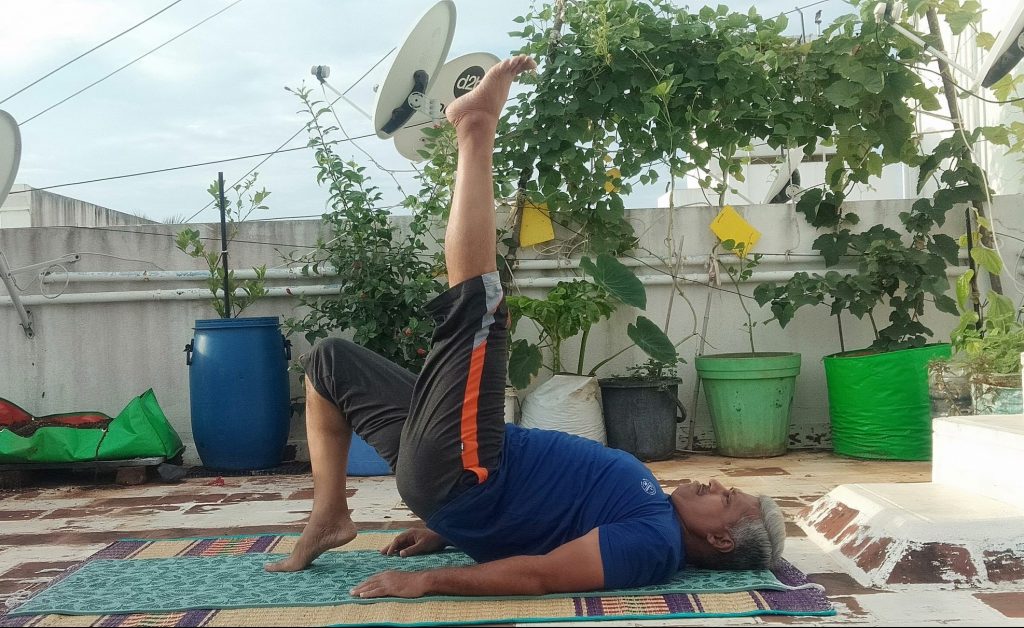
Note
Those with severe shoulder or neck problems should refrain from practicing Bridge Pose.
In case of difficulty in raising your hips, place a yoga block or a folded blanket under the hips.
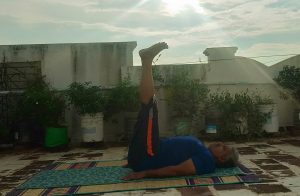
Yoga Pose for Day 84 - Half Plough Pose (Ardha Halasana)
Half Plough Pose is called Ardha Halasana in Sanskrit. 'Ardha' means 'half' and 'hala' means 'plough'. It is named thus due its similarity in appearance to half plough.
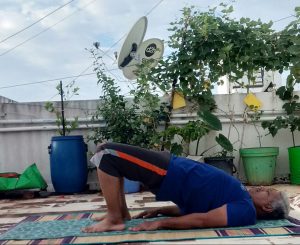
Yoga Pose for Day 82 - Bridge Pose (Setubandhasana)
One of the simplest supine yoga poses that offers amazing health benefits is Bridge Pose. 'Setu' in Sanskrit means 'bridge; and 'bandha' means 'bound'.
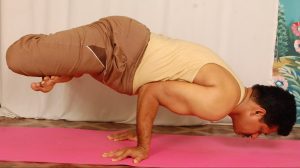
Yoga Pose for Day 81 - Lotus Peacock Pose (Padma Mayurasana)
Few days ago, we had covered the benefits and how-to-do of Peacock Pose. Today's post is about Lotus Peacock Pose, which is a more challenging version of Peacock Pose.
